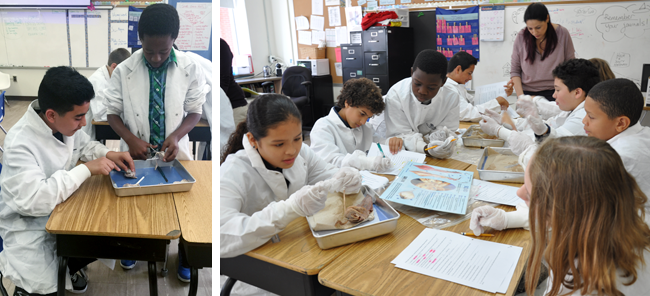
Paul Cuffee 6th graders investigate the anatomy of the eye and the anatomy of squids in science class.
In 6th grade science, students have been learning about adaptation and how an organism’s internal and external structures support their survival and behaviors. The students studied the anatomy of the eye to see how some of its structures such as the retina, which contains rods and cones photoreceptors, or the tapetum in the back of many vertebrates’ eyes, can help organisms see better in the dark. They also conducted behavioral experiments in class and saw how our brain developed a compensatory mechanism for the blind spot called cognitive filling.
Students also dissected squid to learn about the amazing structures that they have to support their adaptation. After examining the dorsal and ventral views of the squid’s external anatomy, the students opened it up to study the internal structures. Did you know that squids have a beak, three hearts, and an ink sac? And did you also know that they can see better than humans and don’t have a blind spot? After students examined and identified all the structures, they got to cut the ink sac open and wrote their names with the squid’s ink! Now, that’s a mark that will stay with them forever.


